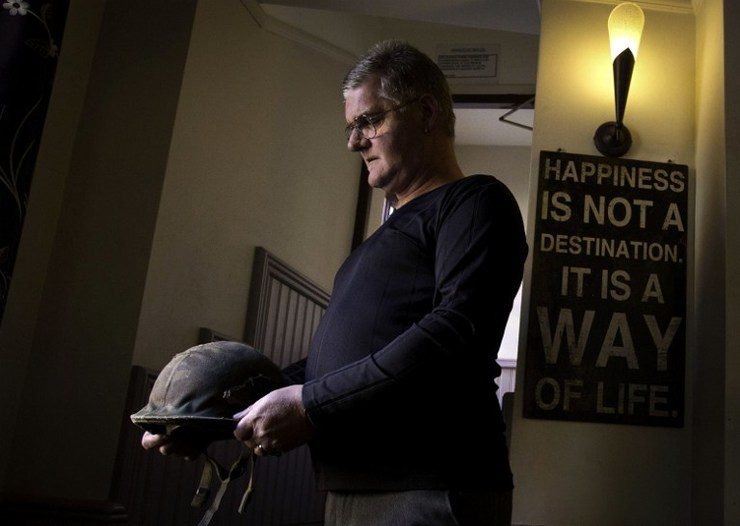SUMMARY
This is AI generated summarization, which may have errors. For context, always refer to the full article.

DERBY, United Kingdom – British soldier Gordon Hoggan still has horrifying nightmares about killing an Argentinian marine with his bayonet during the Falklands War.
But he hopes to find peace by discovering the man’s identity and giving his family back his helmet.
In a fierce and bloody 7-hour battle before dawn on June 14, 1982, the Scots Guards took Mount Tumbledown, the final hill before the Falklands’ capital Stanley, which was liberated by British troops later that day.
Hoggan was in the thick of the assault when he saw the Argentinian soldier.
“I killed him with a bayonet. There was two of them in a cave. We sneaked up to the cave, and when we went into the cave it sort of alerted them and they jumped up and I fired my rifle,” Hoggan told Agence France-Presse.
“I got a stoppage and I didn’t have time to take the magazine off and clear it, so I lunged forward with my bayonet, stabbed him in the neck and he never had a chance to fire.
“It was him or me.”
Hoggan recalls the seven hours of fighting that took place on Tumbledown from 1 am, in driving snow and temperatures of -16ºC (3ºF).
“They were more and better equipped than us, because they had been there for about six weeks before we arrived,” said Hoggan.
“They had dug in. They had proper trenches and bunkers so they were well hidden. We had to root them out between the rocks.
“It was freezing cold. And it was hand-to-hand combat.”
The frostbite cost him the feeling in several fingers.
‘I wake up screaming’
From Kirkcaldy, north of Edinburgh, Hoggan is now 55, divorced and with two daughters. He lives in Derby, central England, in a house found for him by a charity.
Hoggan joined the army at 16 and left in 1993 after more than 18 years of service.
On returning from the Falklands, he was part of the guard outside Buckingham Palace, Windsor Castle and the Tower of London wearing the famous red tunics and black bearskin hat.
But he had a nervous breakdown in 2001 after splitting up with his wife, leading to a move from Scotland to London.
“I ended up living rough in the streets of London for 18 months. Begging. At the time I didn’t know, but I realized later that it had something to do with what had happened” – the events of 1982 in the South Atlantic.
“I would wake up screaming just remembering what I’d done to this Argentinian soldier. It took a lot of years to come out.”
Through a charity for soldiers suffering mental health problems, he got off the streets and received treatment for Post-Traumatic Stress Disorder (PTSD).
“I was treated in a military establishment for five years,” he said.
Returning to the Falklands for the 25th anniversary in 2007, where his party laid wreaths at the Argentinian graves, helped in coming to terms with the demons of war.
“I’m on medication. I will be for the rest of my life. I still have the odd nightmares and tremors but not as often as I used to. I’ve sort of learned to live with it now,” he said.
Tracing helmet’s owner
Now he wants to close the circle fully at last by giving the helmet of the Argentinian soldier he killed to his family.
“I think I’d be doing the right thing,” said Hoggan.
“They may not want it. They’d probably hate me. I killed their son, or brother or father.
“But it was a war situation; it wasn’t a fight in the street. It was him or me. There was no choice. If I hadn’t have killed him, he’d have killed me.
“I don’t think apology’s the right word because it was a battle. But I would like to explain to them why it happened.”
But Hoggan has no idea who the helmet belonged to. Around 20 Argentinians from the 5th Marine Infantry Battalion died on Mount Tumbledown.
He thought that the faded initials “FM” inside the helmet might help, however, it turns out they stand for Fabricaciones Militares, the supplier.
He hopes someone in Argentina will be able to help him identify the owner.
“I’d like to return them the helmet, for closure on my behalf,” he said. “It’s been hard.” – Rappler.com
Add a comment
How does this make you feel?
There are no comments yet. Add your comment to start the conversation.